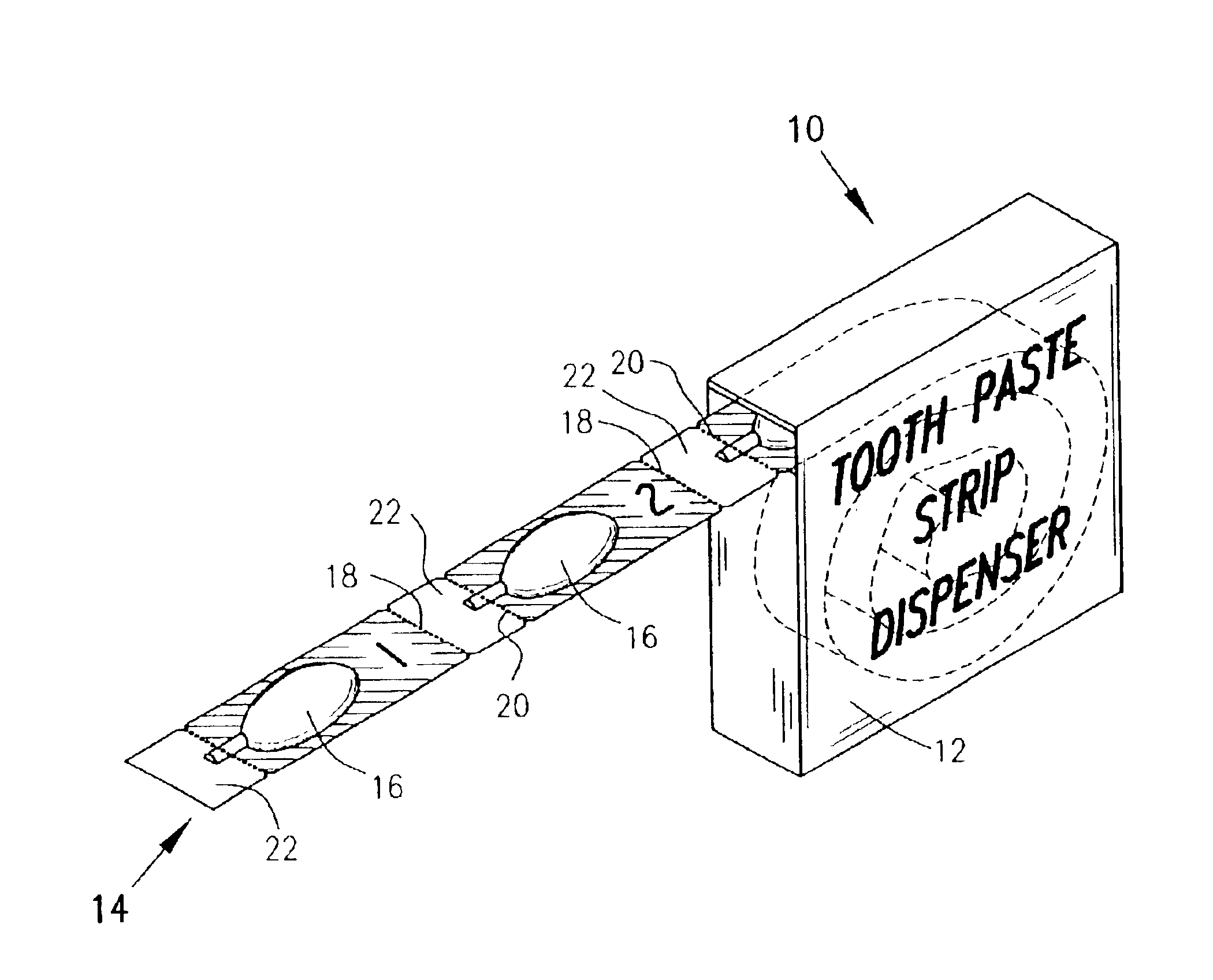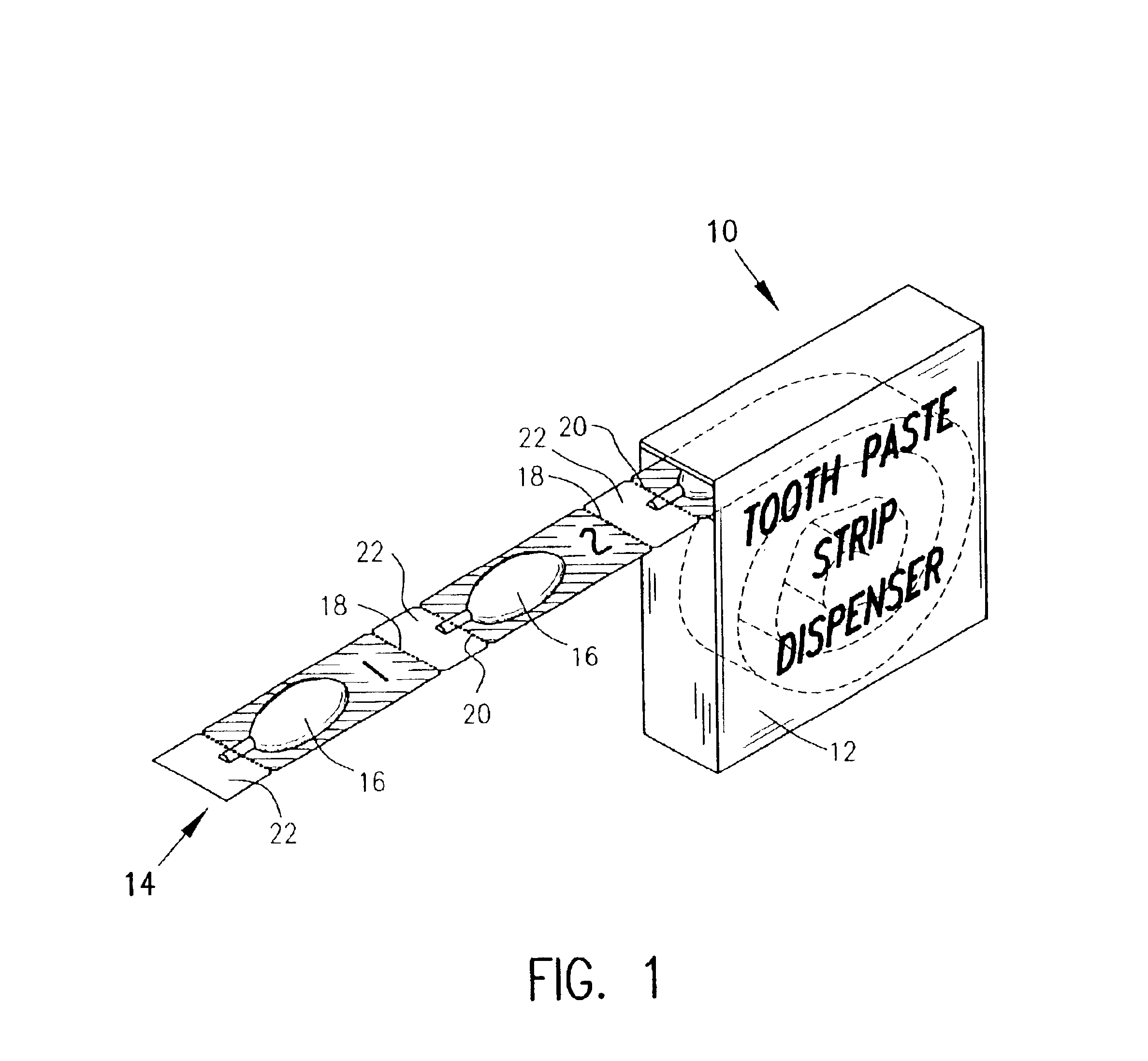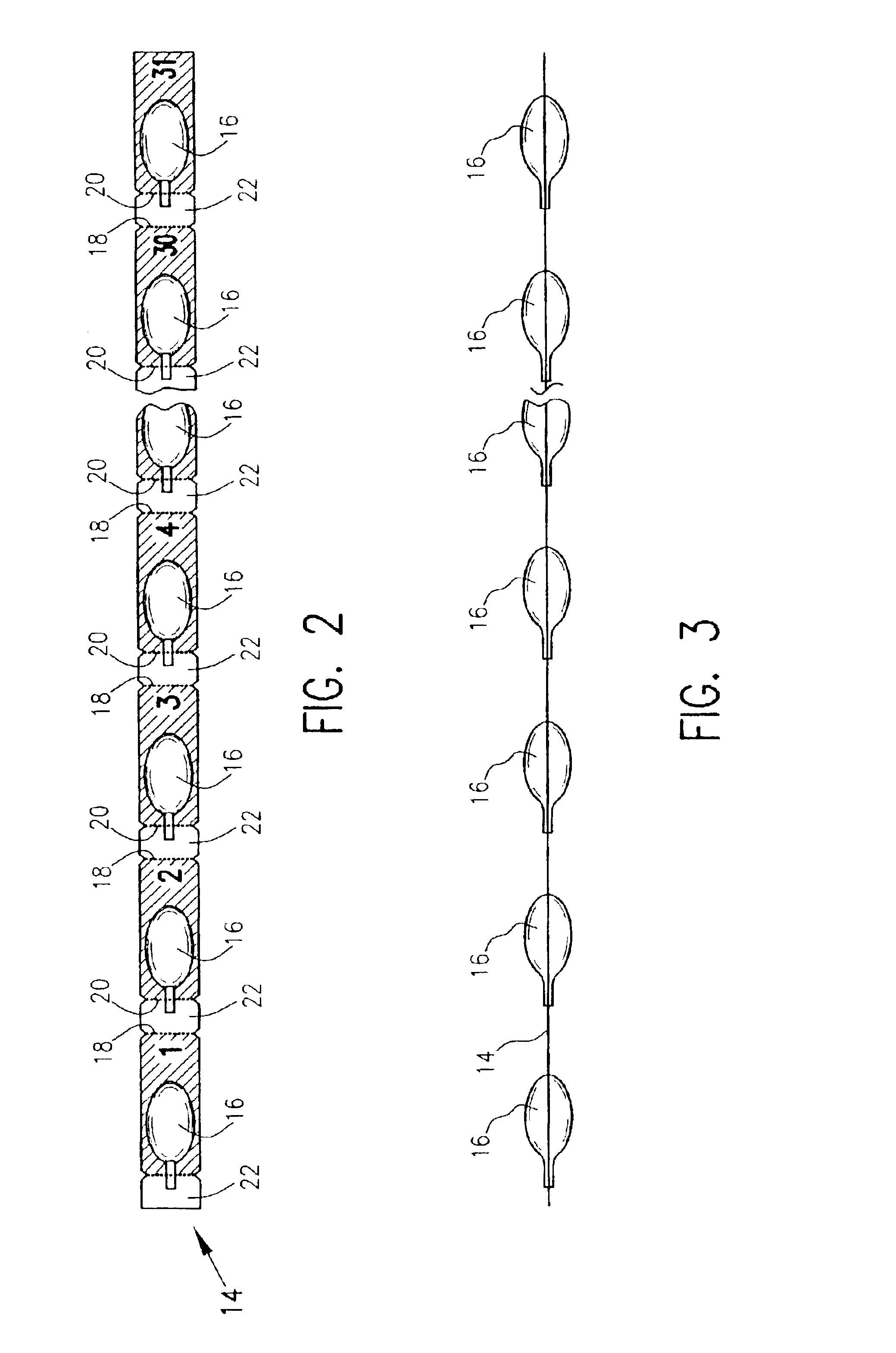Toothpaste dispenser
- Summary
- Abstract
- Description
- Claims
- Application Information
AI Technical Summary
Benefits of technology
Problems solved by technology
Method used
Image
Examples
Embodiment Construction
With reference initially to FIG. 1, a toothpaste dispenser is indicated generally at 10, the dispenser including a container 12, and an elongated strip indicated generally at 14, which strip 14 is coiled within the container 12. The strip can be formed in differing manners, depending upon the packaging machinery available. In one form the strip may be formed from a tube of suitable material, which tube receives measured quantities of toothpaste which are formed into individual sachets 16 by heat sealing the tube, or by ultrasonicly welding the tube, or by any other suitable manner, the individual sachets 16 being separated from each other by spaced apart weakened portions 18.
The strip is printed with indicia, such as numbers representing days of the month. In use, the sachets are separated one from the other by tearing along the weakened portions 18. Furthermore, each sachet is provided with means for opening the sachet so that toothpaste may be squeezed from the sachet. In the illu...
PUM
| Property | Measurement | Unit |
|---|---|---|
| Color | aaaaa | aaaaa |
| Frequency | aaaaa | aaaaa |
| Content | aaaaa | aaaaa |
Abstract
Description
Claims
Application Information
 Login to View More
Login to View More - R&D
- Intellectual Property
- Life Sciences
- Materials
- Tech Scout
- Unparalleled Data Quality
- Higher Quality Content
- 60% Fewer Hallucinations
Browse by: Latest US Patents, China's latest patents, Technical Efficacy Thesaurus, Application Domain, Technology Topic, Popular Technical Reports.
© 2025 PatSnap. All rights reserved.Legal|Privacy policy|Modern Slavery Act Transparency Statement|Sitemap|About US| Contact US: help@patsnap.com



